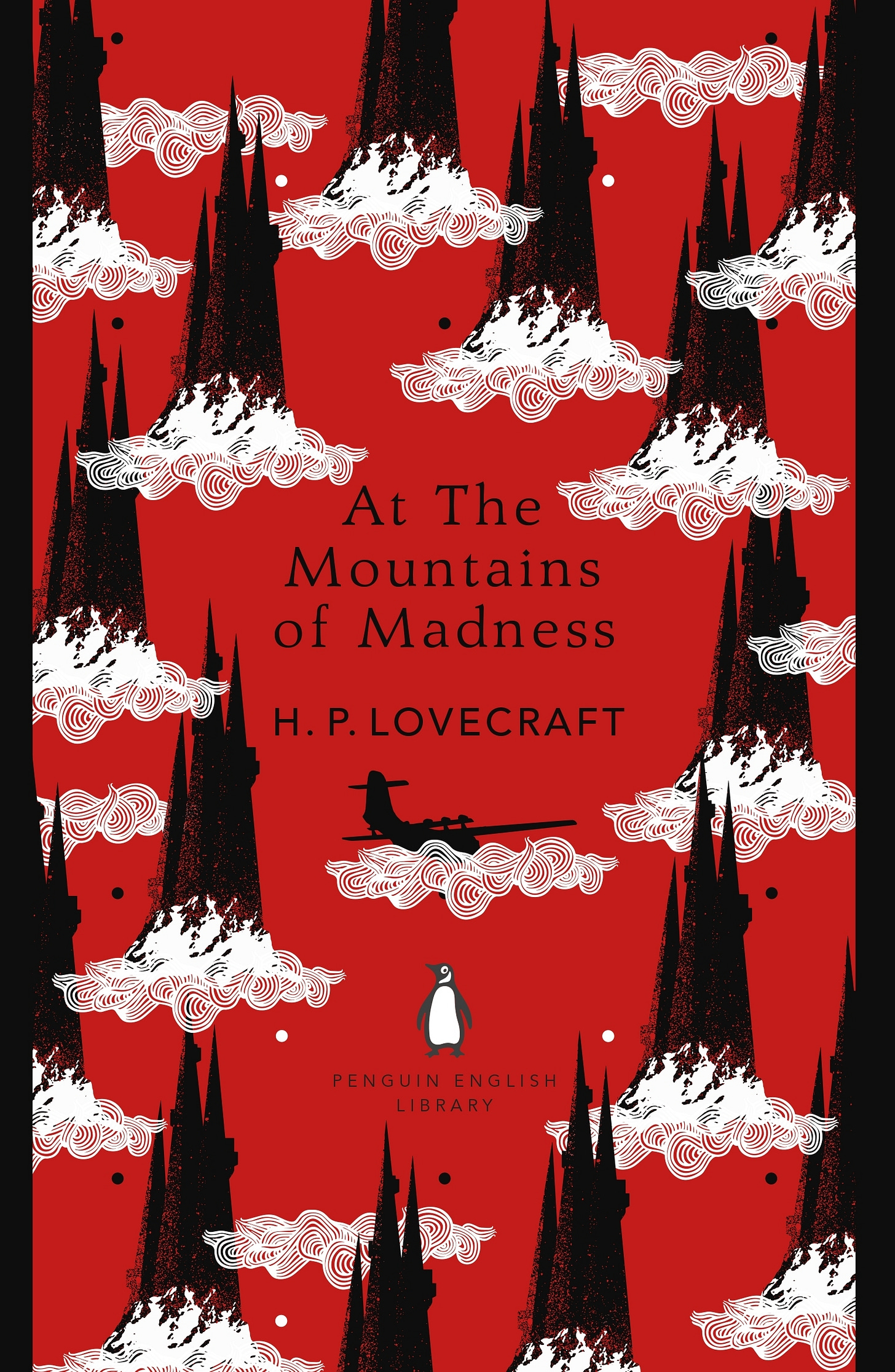The granddaddy of them all
From "The Thing" to "Prometheus," all sci-fi horror owes Lovecraft a cold one

This is the twenty-first chapter in a long-simmering miniseries called “Narrative Architecture” about storytelling choices in fiction. There are many ways to tell a story, and in this series, I’ll examine the literary choices a particular author made and their impact on the story at hand. This week, I’ll engage with H.P. Lovecraft’s classic At the Mountains of Madness, the sci-fi horror novella that set the template for films like The Thing (1982), Alien (1979), and Prometheus (2012).
This post is a revised version of an essay I composed as part of my MFA program at UNR.
At the Mountains of Madness (to which I will henceforth humorously abbreviate as “ATMOM”) is not the first horror story set in Antarctica, but it is one of the most influential (Edgar Allen Poe’s The Narrative of Arthur Gordon Pym of Nantucket, referenced in Lovecraft’s novella, precedes it (8)).
But without ATMOM, we probably would not have The Thing or the Alien film franchises. As such, to borrow the nickname of the Rose Bowl, ATMOM is the “granddaddy of them all.” ATMOM is worth considering for its influence, its unusual choices in narrative style and exposition, but we’ll also have to contend with the elements that have not aged particularly well.
ATMOM is written in the style of a polar journal in the voice of an explorer named Dyer, a decision that both lends authenticity to the narrative but also saps it of its tension, since the existence of the journal might suggest that its author survived the events of the story.1 A popular genre in the early 20th century, polar exploration journals were frequently published and despite their frequent tedium, sometimes became bestsellers—in a way, they were the Planet Earth episodes of their day.
In the novella, Lovecraft acknowledges his debt to the polar genre when he references “regions explored in varying degree by Shackleton, Amundsen, Scott and Byrd.” This move places the “Miskatonic University Expedition” in the continuum of their polar forebears and also showcases an early example of the “false document” narrative strategy—when a book asserts that its contents are a true report of a “real-life” event. This technique was used to great effect by Michael Crichton in The Andromeda Strain, in which he presented his extraterrestrial disease thriller as a “true story” through declassified government reports.

Meanwhile, the early chapters of ATMOM feature dense descriptions of geology, Precambrian fossils, and measurements of latitude and longitude, adding further to the verisimilitude of the early chapters but not exactly contributing to their suspense. Like how these elements are often discussed in polar journals, these components are just as boring here.
The basic plot structure of ATMOM is probably the most influential aspect to the science fiction genre. An advanced party explores a new region and then their transmissions cease. The second party arrives and discovers the abandoned camp, discerning the clues of what might have happened to the lost explorers. This basic format has served as the premise for the films The Thing (1982) and Aliens (1986), in particular. Here, Dyer’s party discovers a lost city in Antarctica built by the Elder Things, a primordial alien race, later killed off by a second, mysterious alien presence (the “shoggoth” monsters originally created and enslaved by the Elder Ones). That said, The Thing and Aliens are much more enjoyable than ATMOM. The dry polar journal format really saps the tension out of the story, which is far more focused on world-building than plot development or the exploration of its characters.
There are also aspects of Lovecraft’s novella that represent dubious elements of storytelling. For one, the narrator’s lengthy explanation of millions of years of history relies on his decipherment, without any difficulty, of the ancient city’s cave drawings:
In certain rooms the dominant arrangement was varied by the presence of maps, astronomical charts, and other scientific designs on an enlarged scale—these things giving a naïve and terrible corroboration to what we gathered from the pictorial friezes and dadoes. (67)
Nowadays, a writer might be asked to create a telepathic connection with the drawings or something to justify the protagonist’s instant understanding of the art. However, in the book, Lovecraft establishes that Dyer and his colleagues are familiar with the “Necronomicon,” an in-universe book of legends establishing the Cthulhu mythos within Lovecraft’s works (7-8). So perhaps that can account for their instant comprehension of the sculptures and cartouches.
The second element which appears to have aged poorly is the “look” of the shoggoth monsters, their form finally revealed in the book’s climax:
It was the utter, objective embodiment of the fantastic novelist’s “thing that should not be”; and its nearest comprehensible analogue is a vast, onrushing subway train as one sees it from a station platform—the great black front looming colossally out of infinite subterraneous distance, constellated with strangely coloured lights and filling the prodigious burrow as a piston fills a cylinder. (117)
Despite Lovecraft’s vivid imagination, he relies on self-aware, cop-out abstractions such as “the fantastic novelist’s ‘thing that should not be.’” What is striking about his monster is that he can only compare it to a subway train, which is strange, considering that this book was written in the 1930s, and subway trains had been around since the 1860s. This I found laughable—that Lovecraft thought subways were unspeakably scary!
Then, of course, we have to contend with the most uncomfortable element in the story. Part of the central mystery of the novel is the fate of the Elder Ones. Eventually, our narrator determines that the enslaved shoggoth monsters had rebelled against their masters and killed the Elder Ones. Plenty of postcolonial scholars have already suggested that this formed an allegory to the idea of contemporaneously colonized countries rising up against their imperial overlords.
While dated and problematic, the plot element speaks to an anxiety likely felt by Lovecraft, known for his white supremacist views and incoherent political ideologies. Interestingly, the element of an ancient alien race killed off by its creations was repurposed for the Alien prequel Prometheus (2012). Just like the Elder Ones were killed off by the “shoggoths,” the ancient alien-astronaut Engineers in Prometheus suffered at the hands of the xenomorphs.
At the Mountains of Madness may be a problematic text, but its legacy on speculative fiction is massive. It is unlikely that the current genre of sci-fi horror would look the way it does today without Lovecraft’s vision.
Works Cited
“At the Mountains of Madness,” Wikipedia, January 13, 2021.
https://en.wikipedia.org/wiki/At_the_Mountains_of_Madness
Lovecraft, H. P. At the Mountains of Madness (Penguin English Library: London, 2018).
However, Robert F. Scott’s journal of his doomed 1912 South Pole expedition was published posthumously and its text concludes at the hour of his death. Robert Falcon Scott, Scott’s Last Expedition (Penguin Random House, London, 2011).

